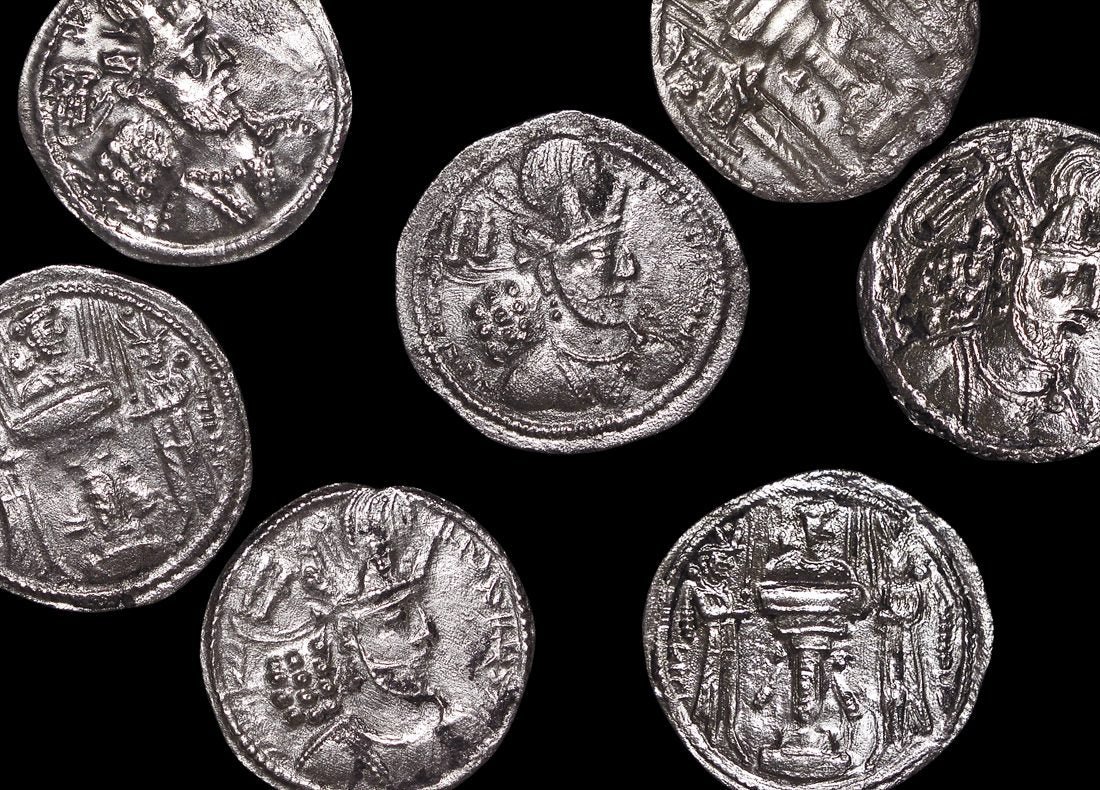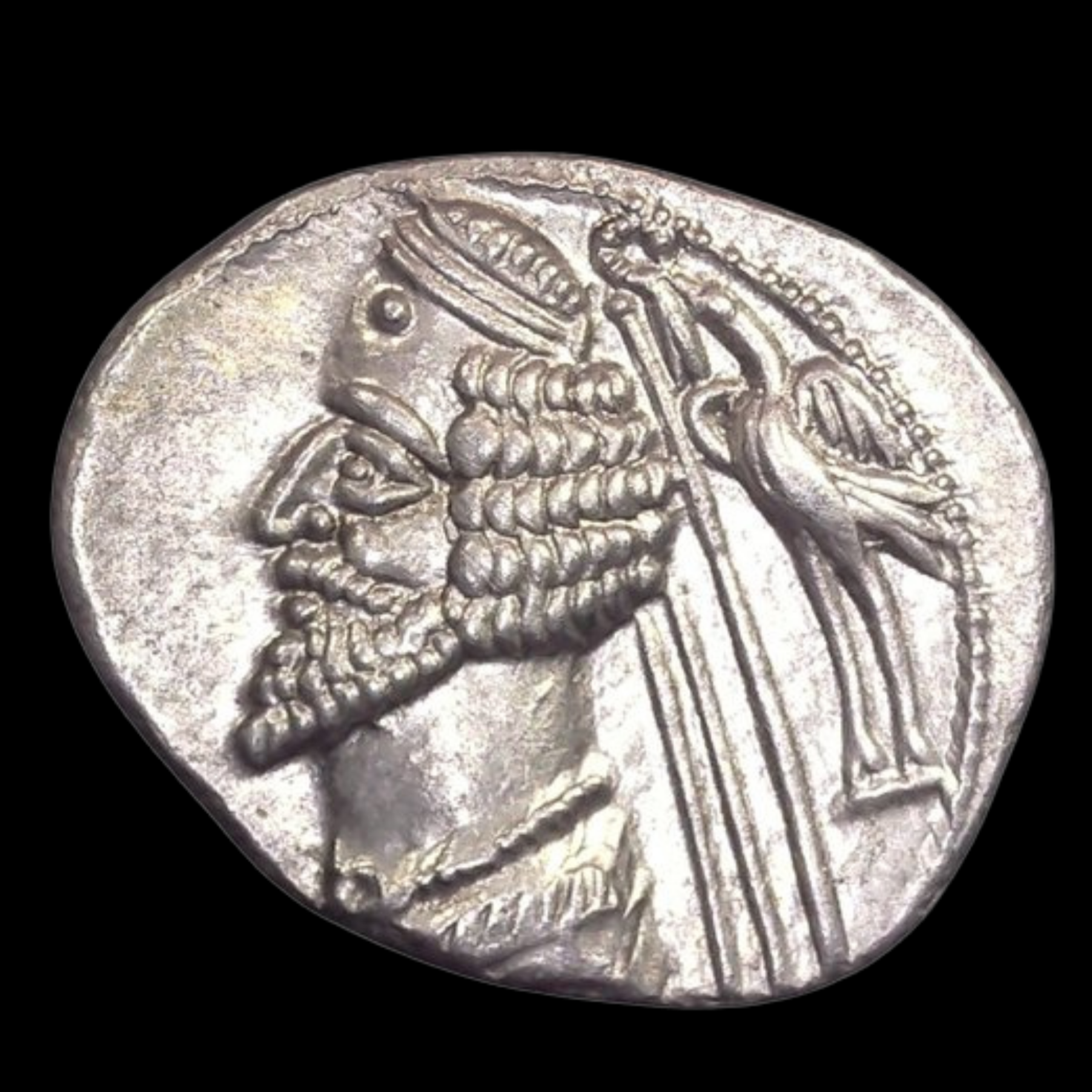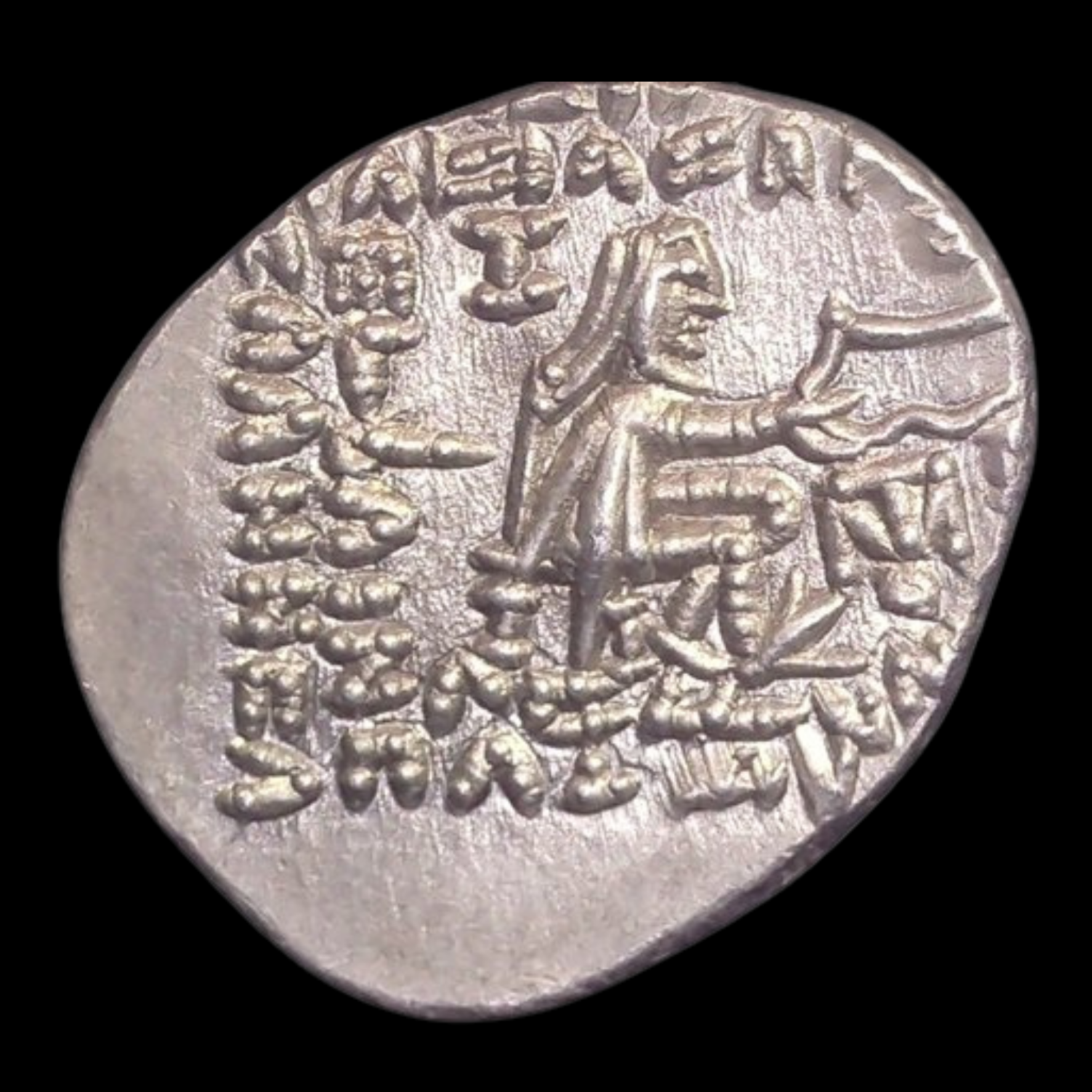 Image 1 of 8
Image 1 of 8

 Image 2 of 8
Image 2 of 8

 Image 3 of 8
Image 3 of 8

 Image 4 of 8
Image 4 of 8

 Image 5 of 8
Image 5 of 8

 Image 6 of 8
Image 6 of 8

 Image 7 of 8
Image 7 of 8

 Image 8 of 8
Image 8 of 8









Tabaristan NGC Certified Slab - Zoroastrian Dabuyid Silver Coin (about 1250 years ago)
The coins shown are representative examples of the grade and type, but not the actual specimens for sale. For details on NGC’s grading standards and definitions, please refer to our NGC Grading page.
Dabuyid Dynasty of Tabaristan (7th–8th Century CE) – Silver Coin, NGC Certified
This professionally graded and certified silver coin comes from the Dabuyid dynasty, rulers of Tabaristan (modern northern Iran, south of the Caspian Sea), a mountain stronghold that preserved Zoroastrian traditions during the early Islamic era.
Obverse: Stylized portrait in the Sasanian tradition, reflecting continuity with pre-Islamic royal imagery.
Reverse: Fire altar flanked by attendants or related Zoroastrian religious symbols, adapted from Sasanian prototypes.
Technical Details:
Material: Silver
Format: NGC-certified protective slab
Authentication: Certified by NGC
Note: Images shown are representative; actual coin may vary
Historical Significance:
The Dabuyids governed Tabaristan from the late 7th to the mid-8th century, maintaining political autonomy and religious independence while the Islamic caliphates expanded around them. Their coinage deliberately imitated Sasanian silver drachms, preserving traditional Zoroastrian motifs such as the fire altar, while incorporating local adaptations that distinguished their issues.
Zoroastrianism—the dominant faith of pre-Islamic Persia—introduced enduring concepts such as heaven and hell, divine judgment, and an ultimate cosmic struggle, which later influenced Judaism, Christianity, and Islam. These coins thus represent not only a dynasty’s resistance to cultural assimilation but also a tangible link between the ancient Persian world and the emerging Islamic Middle East.
This certified example is a remarkable relic of a transitional age, embodying the endurance of Persian religion and identity amidst sweeping historical change.
The coins shown are representative examples of the grade and type, but not the actual specimens for sale. For details on NGC’s grading standards and definitions, please refer to our NGC Grading page.
Dabuyid Dynasty of Tabaristan (7th–8th Century CE) – Silver Coin, NGC Certified
This professionally graded and certified silver coin comes from the Dabuyid dynasty, rulers of Tabaristan (modern northern Iran, south of the Caspian Sea), a mountain stronghold that preserved Zoroastrian traditions during the early Islamic era.
Obverse: Stylized portrait in the Sasanian tradition, reflecting continuity with pre-Islamic royal imagery.
Reverse: Fire altar flanked by attendants or related Zoroastrian religious symbols, adapted from Sasanian prototypes.
Technical Details:
Material: Silver
Format: NGC-certified protective slab
Authentication: Certified by NGC
Note: Images shown are representative; actual coin may vary
Historical Significance:
The Dabuyids governed Tabaristan from the late 7th to the mid-8th century, maintaining political autonomy and religious independence while the Islamic caliphates expanded around them. Their coinage deliberately imitated Sasanian silver drachms, preserving traditional Zoroastrian motifs such as the fire altar, while incorporating local adaptations that distinguished their issues.
Zoroastrianism—the dominant faith of pre-Islamic Persia—introduced enduring concepts such as heaven and hell, divine judgment, and an ultimate cosmic struggle, which later influenced Judaism, Christianity, and Islam. These coins thus represent not only a dynasty’s resistance to cultural assimilation but also a tangible link between the ancient Persian world and the emerging Islamic Middle East.
This certified example is a remarkable relic of a transitional age, embodying the endurance of Persian religion and identity amidst sweeping historical change.











